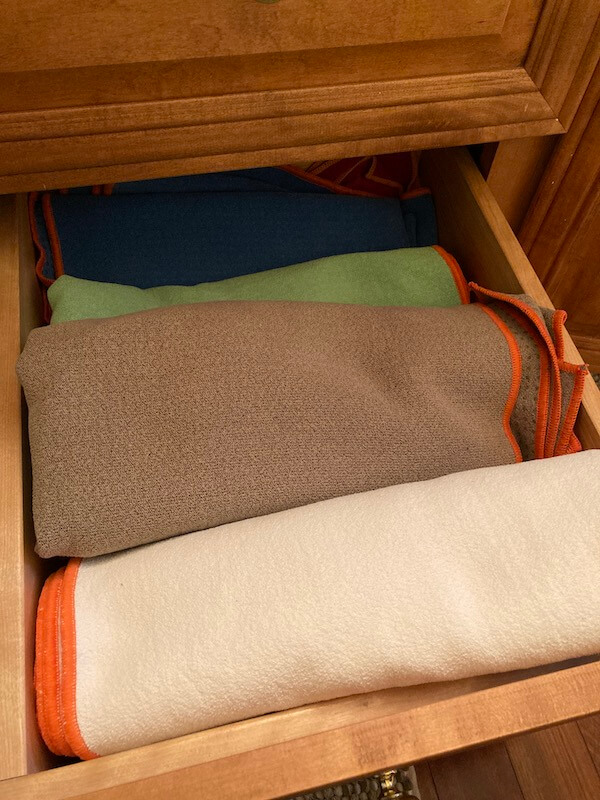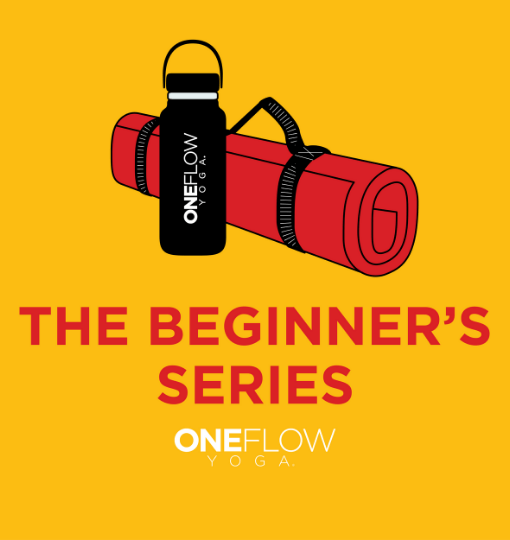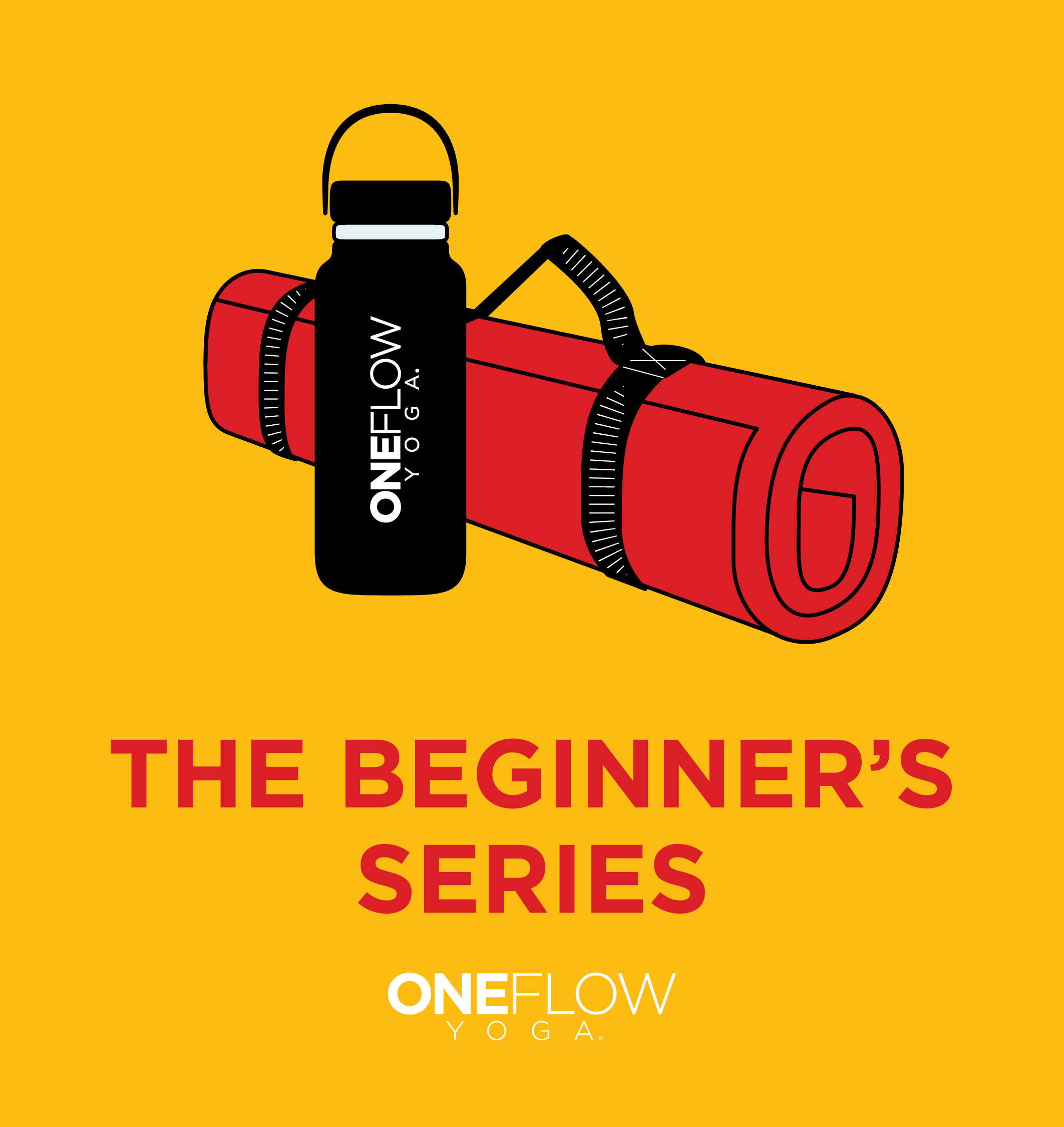Look around at social media or in popular portrayals of yoga, and you might think you need $300 yoga pants and chairs, blankets, and bolsters. None of that is true, as you’ll find out when we address the question, “what is essential yoga equipment for beginners?”
The only essential equipment you need for yoga is a mat. And since it’s critical, it makes sense to invest in a good one because it can help prevent injuries and make your yoga practice more enjoyable. A set of quality yoga blocks are also highly recommended.
The abundance of yoga gear out there can lead to confusion, especially if you are new to yoga. I’ll separate what is necessary, tell you why it makes a difference, and give a few recommendations. And I’ll even prioritize the items, so you know what to buy, when, and I’ll suggest some alternatives that will cost you nothing.
What Is Essential Yoga Equipment?
Essential means you absolutely have to have it. If you are biking, you need a bike, and rowing, you need a boat. Yoga requires only one piece of gear, and that is a yoga mat.
Note: I’ve chosen to use the word equipment because it’s necessary. You can also call it yoga gear or kit. The term “accessories” is not quite the same, though, because it’s suggestive of something that’s an add-on.
The amount of gear you need will depend on the type of yoga you practice. Vinyasa yoga typically uses only a block, while Iyengar has so much gear that it’s common to see ropes and wheels. However, all physical yoga practices, aka asana, need a yoga mat.
Yoga Mats
A yoga mat is a specific item that is roughly 2 feet by 6 feet (61cm by 180cm) that is designed to give you grip and stability while practicing.
I take the time to point this out because not just anything will do. I’ve seen people bring straw mats that are better suited to the beach, huge foam exercise mats, and too many other creative items to list. But they are all poor substitutes because a yoga mat has a particular purpose.
So you don’t die.
Purpose Of A Yoga Mat
Safety
That might be a bit of hyperbole, but not much. The primary purpose of a yoga mat is to keep you safe and prevent injuries.
Most injuries that happen in a yoga room are from slips and falls. The risk increases as the amount of sweat produced goes up.
Yoga mats counter slippage by providing a stable surface that is often textured and designed for grip. A mat gives you something you can stand on that won’t move, but not all yoga mats are the same.
Note: Slippage was how the yoga mat was born when a yoga teacher removed a rug to use the non-slip pad underneath.
Comfort and Cushion
The other purpose of a yoga mat is to provide cushion for your joints. It does this by being dense so that you don’t feel the hard floor underneath you.
And you do want to practice yoga on a hard surface if possible. Balancing is challenging enough without trying to do it on carpet. But hard surfaces can beat up your knees and be unforgiving on your joints which is why you want a good mat.
Buy Quality Tools
Why buy quality tools?
- Better Quality
- Confidence
- Long-Lasting
- Cheaper Overall
Better tools are better. They are made of better materials, serve their purpose well, and will last longer. The same holds true for yoga mats.
A premium yoga mat will cost you $90-$140.
To put that in comparison, a good pair of running shoes costs $115-$120 and has to be replaced yearly. Cycling and spinning shoes cost $100 for a cheap, decent pair, not to mention the cost of the bike. Price is always a consideration, but yoga practitioners get by with relatively inexpensive equipment compared to other athletic endeavors.
A cheap yoga mat costs about $20, which seems like a bargain. But cheap mats tend to be much slicker, will not provide adequate cushioning, and wear out every year if you practice regularly. That’s why it’s better to invest in a good mat if you think you will keep practicing yoga.
What if you aren’t sure if yoga is right for you? You can borrow a mat from a friend or rent them from a yoga studio. Most yoga studios offer rentals, where you pay a couple of dollars and get to use a mat for a session. But once you decide yoga is going to be something you do, buy a high-quality mat.
I’m always a little leary of yoga studio mat rentals because some studios simply recycle their lost and found mats as rentals. Then there’s the issue of cleanliness.
Yes, we offer loaner mats for students at our studio who are new or just forgot their mat.
They are premium mats, offered at no charge, and are sanitized for each student. That means they are clean, and the bacteria have been destroyed.
Needless to say, offering free, clean, quality mats is not the best strategy if you want to sell a bunch of mats. But it’s a core part of who we are.
A yoga mat is the one piece of essential equipment yoga you need for yoga. When you invest in a quality mat, like the one recommended below, it will serve you for however long you practice.
And it’s cheaper overall, not only because you only ever have to buy one, but because a bad fall can cost you money in medical bills, lost time at work, and pain and discomfort.
Too Sticky?
Yoga mats are sometimes referred to as sticky mats because that’s their primary purpose. But can a mat be too sticky? Any attorney would tell you the stickier, the better, because you want to avoid the liability of slips and falls.
But as a yoga practitioner, you don’t want a mat that is too grippy. Why? Because it will detract from your practice as you become more skilled. You can actually use the grip of the mat to wedge yourself into postures instead of using muscular engagement. While this might temporarily get you into the shape of the pose, it doesn’t build strength.
Look for a mat that gives support but doesn’t overdo it.
Yoga Mat Buying Considerations & Recommendations
Are you biking, walking, or using public transportation to get to a yoga studio? If so, get a mat in the midrange weight. Buy the manduka pro lite mat.
If you are driving, or practicing at home, or just prefer to have extra cushion, choose the manduka pro mat. It is the overwhelming favorite amongst yoga teachers.
If you are taller than 6’2, get a long mat. A yoga mat is the size of a person, which is why they are 6 feet in length.
Secret equipment
If you like a little more cushion, stop by the garden department of a hardware or big box store and pick up a knee cushion. They might also be called a kneeling pad. They are just the right size to place under your knees, are light, and inexpensive.
Yoga Blocks
One other piece of equipment is worth your attention, and that’s the humble yoga block. I’ve written all about how to use them and the purpose they serve here.
However, briefly, yoga blocks make practicing yoga easier to learn, especially if you are a beginner. They make it possible to reach the floor as you are working to increase your flexibility. Like the yoga mat, a block increases safety and minimizes your risk of injury.
Yoga blocks also allow you to do the work of the posture, which prevents you from picking up bad habits that are difficult to undo.
For instance, in some leaning postures, your hand is meant to be in line with your hip. If you can’t get your hand to the ground, then you might place it elsewhere, which focuses the stretch into a different area.
By using a block, you can feel the pose where it’s meant to be felt.
Blocks aren’t just for people newer to the practice. As your skill grows, the yoga block will grow with you as it can be used to add more challenge to further increase strength.
I recommend buying a set of blocks, which is two. You could make one work if you have to, but it’s so much better to have a block for each hand. And to keep with our theme of investing in high-quality blocks. Here is the block I recommend.
Over the years, I’ve purchased hundreds of blocks and seen them used by all kinds of students, and this block is the best. It’s also the one we use in the studio.
You can get by using big cans of beans or thick books instead of blocks. But this is an item you’ll wish you purchased sooner.
Towels
Is your yoga practice sweat-inducing, like power, vinyasa, or hot yoga? Then it’s a good idea to have two towels, one to cover your mat and one to wipe your face.
You probably have a few towels around your home, unless you air dry after your shower, so this is one item that won’t cost you.
Hand Towels
The first towel you’ll want is a small hand towel, somewhere in the 16 in by 28 in (40 cm by 72 cm) size.
A small hand towel is ideal for the following:
- To wipe sweat from your face
- To place under your knees as a cushion
- To use as a strap
If you use it as a cushion, always be sure it’s folded evenly. Yoga straps are wonderful for yoga, but most beginners can make do with a hand towel. At this stage of your practice, the biggest issue is one of reach.
Pro-Tip: When using a towel for reach, it always goes in the top hand to lower to the bottom hand for binds.

Mat Towels
The second towel is to cover your mat. This prevents puddles of perspiration from pooling, thus producing a precarious practice. Once again, it’s about slipping and falling.
The right towel for this job can cover your entire mat. A beach towel is ideal because it’s designed for you to rest your body on when you’re at the shore. Don’t get a towel that is too thick, though, as it can be harder to stand on.
Pro-Tip: Either keep your towel folded width-wise at the top of your mat until you start sweating or wet it down lightly first. You do this by spraying a mist of water from a spray bottle or putting a few drops from your water bottle where your hands and feet are. Both will help traction.
There is a towel you can buy to cover your mat called yogi toes. They are the exact size of a mat and feature silicone nubs that are designed for grip. I must have 15 of these because they are amazing, but I did start off with a regular towel. You can buy them here.
Either way, a larger towel is an excellent way to have a hygienic layer for you to rest on. This is perfect if you don’t wash your mat every time you use it or use a borrowed or rented mat.
Order of Purchase
| Priority | Item | When |
| 1 | Yoga Mat | After you decide yoga is for you |
| 2 | 2 Yoga Blocks | Right away if you practice at home |
| 3 | Yogi Toes | Early on, if you practice regularly |
Other Yoga Accessories
We are down to true yoga accessories. These are items that can be nice to have but not essential yoga equipment.
Yoga Strap
As I mentioned above, as a beginner, I would skip the strap and use a hand towel instead. In vinyasa yoga, we don’t use straps a lot unless we are working on binds. Iyengar yoga uses straps routinely to get you into yoga poses.
And straps have their uses. If you buy a strap, choose one at least 6 feet or longer (1.8 meters) long and features a metal D ring, which I find more comfortable. Some people prefer a quick-release plastic buckle that is easier to work with.
Mat Carrier
I have a mat bag that I love but primarily carry my change of clothes and towels in it. I prefer the strap-style mat carriers for my mat but only use them when I have to walk a few blocks to class or take the subway, tube, or metro.
Mat carriers are convenient but unnecessary if you are only walking from the parking lot to the yoga studio.
Blankets
Some yoga practices like restorative yoga use blankets for support. A couple of thick beach towels can work well. If you are in a studio offering this class type, they most likely have blankets for you to use for free.
Blankets can be used in the following ways:
- Sit on for meditation or for seated forward folds
- Cushion for limbs or for restorative yoga
- Cover yourself in savasana, the final pose in yoga
Other Items You Need For Yoga
I have kept this conversation focused on yoga equipment. But yoga is a physical practice, so it always requires anything else you regularly need to workout.
Water
You probably have a water bottle. If not, get a good water bottle that is stainless steel and vacuum insulated. This type of bottle keeps your water cold for hours and won’t leak. Again, this helps prevent slips and falls.
Clothing
This is a topic by itself. A couple of things to keep in mind.
You probably have exercise clothing.
Modern exercise clothing is not cotton, allows you to move around and wicks sweat. If you’re unsure if your butt will show through your leggings, simply do the bend-over test in the mirror at home.
You don’t need to buy wildly expensive clothes.
I like yoga pants and have a drawer full–but I’m a professional yoga teacher and studio owner. When I first started practicing, they didn’t make “yoga pants” so I wore dance leggings.
Today you can buy decent yoga pants at Target.
For tops, just choose one that won’t go over your head in poses like downward facing dog. Do the bend-over test for this too. Your top should stay in place.
For guys, the top is optional, and women will probably want a sports bra.
Rooms can be heated, so check with the studio or look online to see what people are wearing. Hot yoga practitioners tend to wear shorts. Iyengar rooms can be cooler, so keep that in mind. I always keep a hoodie with me just for that purpose because I don’t like to be cold. You can also take off layers as you warm up.
Can I just wear my running shorts or cycling attire to practice yoga?
Yes, you can. We regularly see that in the studio, as well as people who wear a sports bra and a t-shirt.
The most important factor is do you feel comfortable in what you are wearing. Wicking sweat and mobility are comfort factors. As long as you feel good, then go for it. And if you’re at home practicing online, then why not do it in your pajamas?
What do I do about my hair?
If you have long hair, put it in a low ponytail with a hair tie. Top of the head is not helpful for inversions. Middle placement is not great for any yoga postures on your back or savasana.
You can always wear a headband instead.



